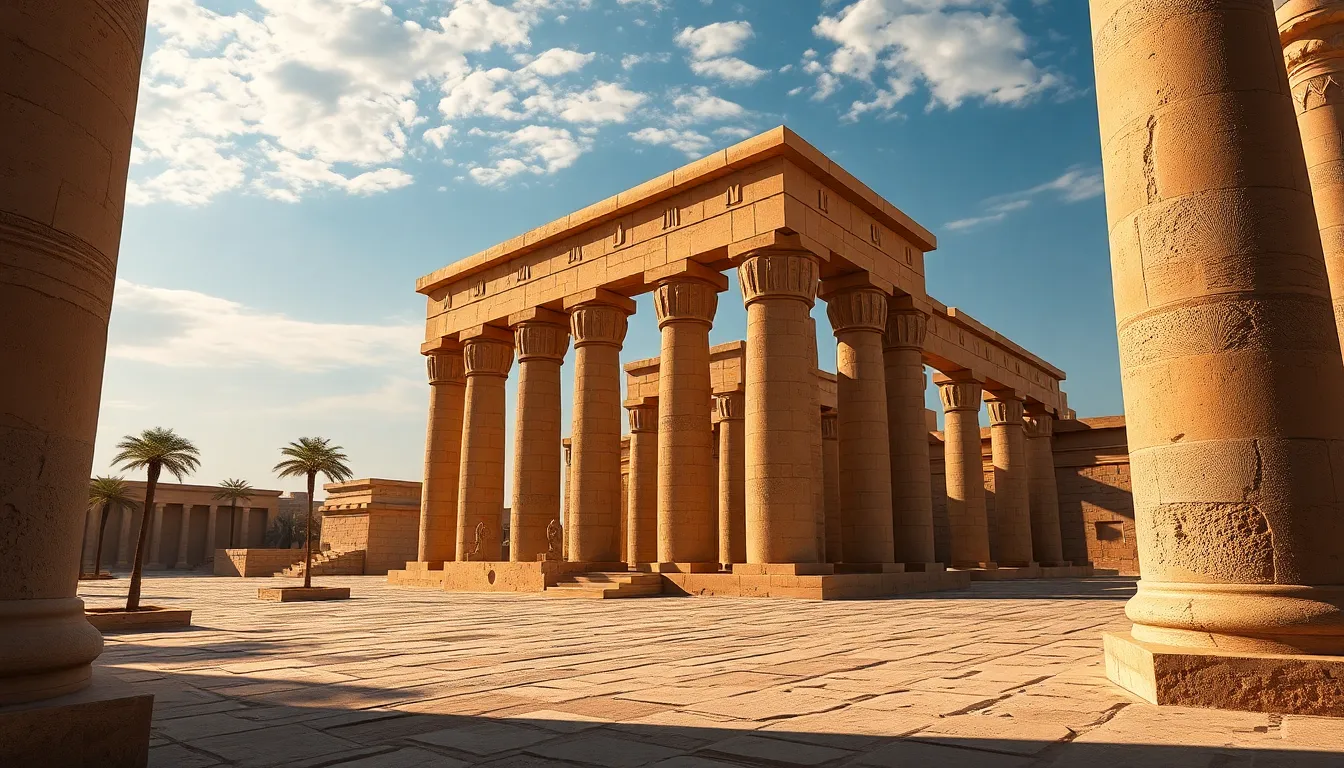The Mythical Geography of the Temple of Karnak
I. Introduction
The Temple of Karnak stands as one of the most significant religious structures in ancient Egypt, dedicated primarily to the worship of the Theban triad of Amun, Mut, and Khonsu. Located near Luxor, this sprawling complex embodies the grandeur and spiritual depth of ancient Egyptian civilization.
The mythical geography of Karnak plays a crucial role in understanding the cultural and religious life of the time. Its layout, architecture, and the associated myths illustrate the deep connection between the physical and spiritual realms in ancient Egypt.
This article aims to explore the historical context, symbolic significance, and the interweaving of mythology and geography at the Temple of Karnak, shedding light on its enduring legacy.
II. Historical Context of the Temple of Karnak
Construction of the Temple of Karnak began around 2055 BCE during the Middle Kingdom and continued into the Ptolemaic period, showcasing various architectural styles and techniques developed over nearly 2,000 years.
- Construction and architectural evolution: The temple complex evolved significantly, with contributions from numerous pharaohs, including Hatshepsut, Ramses II, and Tutankhamun, each adding their own elements, such as massive pylons, halls, and hypostyle structures.
- Key deities associated with the temple: The temple is primarily dedicated to Amun, the king of the gods, but also honors Mut and Khonsu. This triad represents the aspects of creation, motherhood, and time, respectively.
- Role in ancient Egyptian religion and society: Karnak served as a major religious center, a site for festivals, and a place of pilgrimage, reflecting its importance in the daily lives of ancient Egyptians.
III. Symbolism of the Temple’s Layout
The layout of the Temple of Karnak is rich in symbolism, representing the cosmos and the divine order of the universe.
- The design representing the cosmos: The temple’s axis is aligned with the cardinal points, symbolizing the connection between the earthly realm and the heavens.
- Alignment with celestial bodies and seasons: Key structures within the temple are aligned with the sun’s path, reflecting the importance of solar worship in ancient Egyptian religion.
- Significance of sacred spaces within the temple: Different areas of the temple served specific religious functions, with sanctuaries dedicated to various deities, each reflecting distinct aspects of the divine.
IV. The Role of Myths in Shaping the Temple’s Geography
Mythology heavily influenced the architectural and geographical layout of the Temple of Karnak, intertwining the sacred with the physical.
- Creation myths and their influence on temple architecture: The myths surrounding the creation of the world often dictated the design of sacred spaces, with the temple mirroring the primeval mound from which creation emerged.
- Legends associated with specific areas of the temple: Various sections of the temple are linked to specific myths, such as the sacred lake, believed to be a reflection of the primordial waters of creation.
- The relationship between mythology and ritual practices: Rituals performed within the temple often reenacted mythical events, reinforcing the connection between the physical space and the divine narratives.
V. Sacred Pathways and Their Significance
The Temple of Karnak is connected by a network of sacred pathways that hold deep mythological significance.
- The processional ways and their mythical implications: These pathways were used during religious festivals, symbolizing the journey of the gods and the movement of divine energy throughout the temple.
- The importance of the Avenue of Sphinxes: This grand avenue connects Karnak to the Luxor Temple, lined with sphinxes that symbolize protection and guidance for the pharaohs and the gods.
- Connection between the temple and the Nile River: The Nile was viewed as a sacred entity, and the temple’s proximity to the river reinforced its role as a center of divine activity and pilgrimage.
VI. The Influence of Natural Geography
The natural landscape surrounding the Temple of Karnak has significantly influenced its religious practices and beliefs.
- Geographic features surrounding the temple: The temple is situated on the east bank of the Nile, providing a majestic backdrop of mountains that were seen as sacred.
- How the landscape influenced religious beliefs: Natural features were often personified as deities, and the surrounding environment played a critical role in the spiritual worldview of the ancient Egyptians.
- Interaction between the temple and its environment: The construction of the temple took into account the seasonal flooding of the Nile, which was vital for agriculture and thus deeply intertwined with their religious celebrations.
VII. Modern Interpretations of Karnak’s Mythical Geography
Archaeological discoveries and modern interpretations have shed new light on the Temple of Karnak’s mythical geography.
- Archaeological discoveries and their implications: Excavations have revealed new structures and artifacts that provide insights into the religious practices and daily life of the ancient Egyptians.
- Interpretations by historians and Egyptologists: Scholars continue to explore the interplay between the temple’s geography and the mythology that informed its construction and use.
- The impact of tourism on the understanding of the temple’s mythology: As more visitors flock to Karnak, there is a growing interest in preserving its legacy while educating the public about its rich historical and mythological context.
VIII. Conclusion
In summary, the Temple of Karnak embodies the mythical geography that was central to ancient Egyptian culture. Its design, layout, and the myths associated with it reflect a profound understanding of the cosmos and the divine.
The enduring legacy of the Temple of Karnak continues to resonate in contemporary culture, serving as a symbol of ancient achievements in architecture, spirituality, and mythology. As we delve deeper into the intersection of mythology and geography in ancient Egypt, we uncover the layers of meaning that make the Temple of Karnak a timeless marvel.




